Art & Tech
The ‘London Standard’ Reanimated Its Most Feared Art Critic With A.I. The Results Won’t Shock You
As Brian Sewell himself would say... 'How ghastly.'
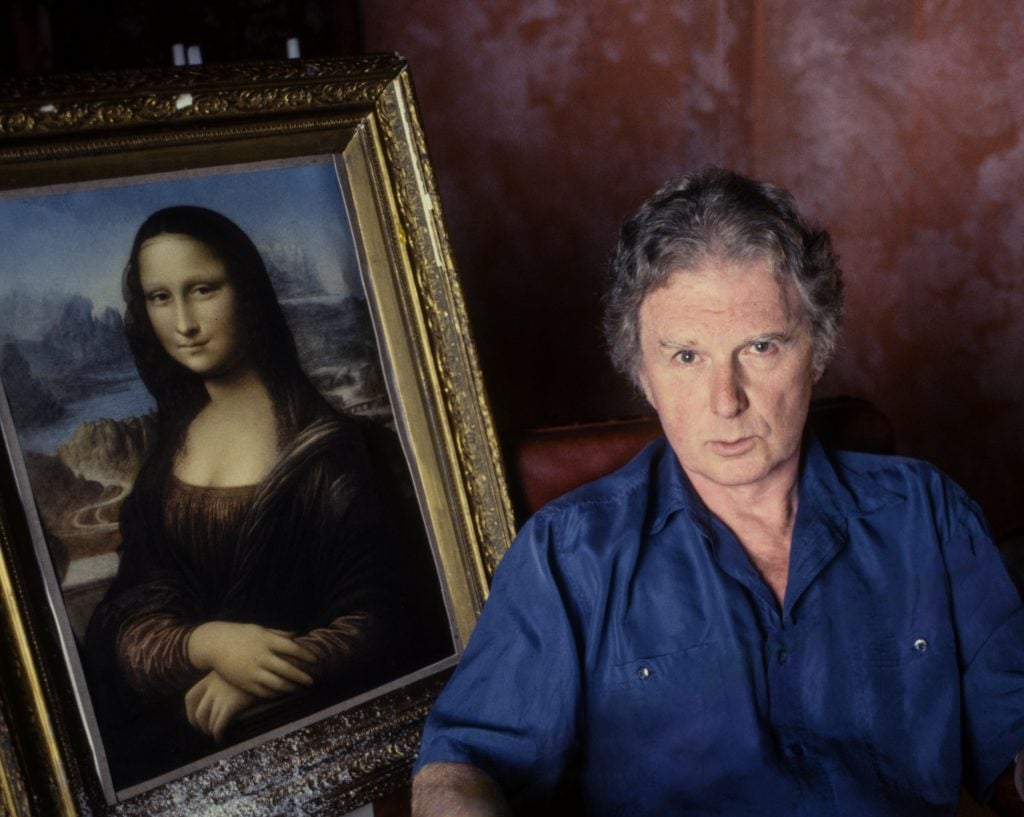
As Brian Sewell himself would say... 'How ghastly.'

Ben Davis

It’s a gesture that’s meant to say to the world, “We are embracing new ideas,” but that actually says, loudly and proudly, “We are out of ideas.” I speak, of course, of the London Standard‘s decision last week to publish an A.I.-written art review in the voice of the long-deceased art critic Brian Sewell as a centerpiece of its relaunch.
The publication is the successor to the venerable London tabloid the Evening Standard, which has ceased daily printing and now runs weekly under that new name. What could be more appropriate to mark this occasion than to revive a corpse and make it speak again, in reduced form?
This is a paper in crisis, laying off scores of writers. Its owners say that its hold on readers has been hit hard by, among other things, wifi on the Tube, which has people reading their phones rather than commuter papers. It aims to claim an identity as “a bold and disruptive new publication,” its interim chief executive, Paul Kanareck, told the Guardian.
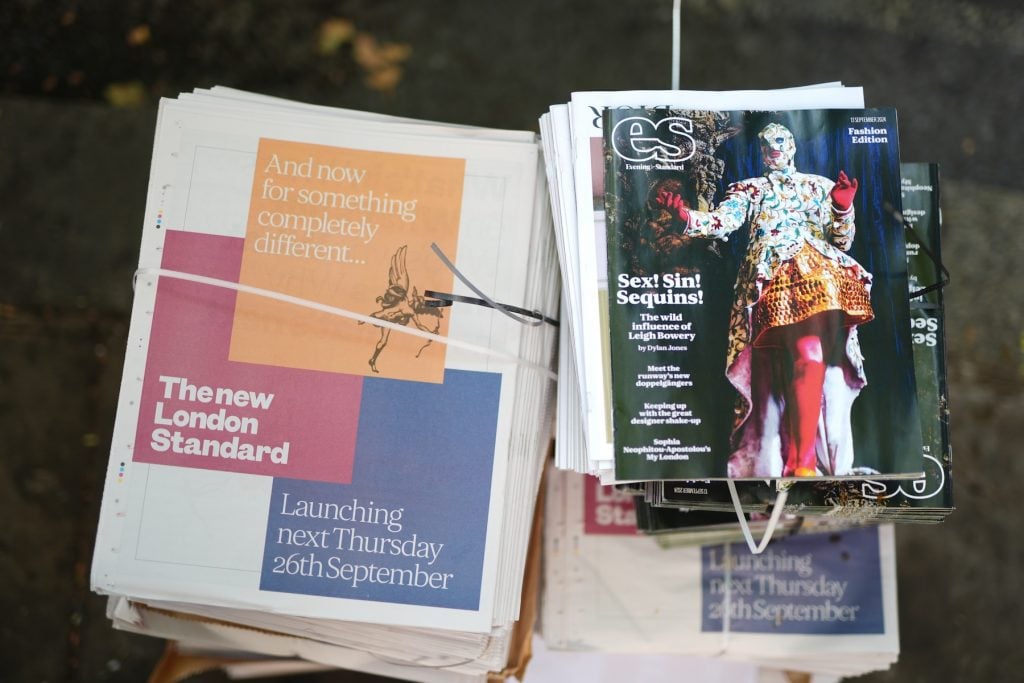
Copies of the final print of the London Evening Standard are taken by readers as the paper becomes a weekly with a new name. (Photo by Jordan Pettitt/PA Images via Getty Images)
And so it debuted with an A.I.-themed issue about London as a tech capital, brandishing an A.I.-made portrait of Prime Minister Keir Starmer on its cover—and that hot-off-the-presses review of the National Gallery’s current Van Gogh blockbuster by the paper’s most infamous writer, the parodically posh firebrand Sewell, who died in 2015.
On these shores, Sewell is best remembered for his 2008 comment that women aren’t good artists, but he was much-read in the U.K. for his acid pen and hostility to the Young British Artists in the 1990s. He’s not really the voice you’d resurrect, intuitively, to signify the “future facing evolution” of any brand. He’s just a bit of IP that they can do something with.
Is it worth even getting mad? Not really! The gesture seems like a naked play to drum up some outrage, a sweaty grasp after roguish relevance. Be that as it may, I’ll take the bait—even if the hook is not well baited.
Now, when it comes to works of visual art, the phrase “A.I art” makes me immediately suspicious that something is low effort. For instance, when I look at the London Standard’s cover portrait of Starmer, my mind toggles between two thoughts: “what a dull portrait” and “is it just me, or has the A.I. disappeared the mole that gives his face character?”

The cover of the new London Standard with an A.I.-generated portrait of U.K. Prime Minister Keir Starmer on it.
The same ambient suspicion holds for A.I. writing. So, let’s take a close look at the fresh copy that our new friend, A.I. Brian Sewell, is offering up. (You could technically say it’s “copy of a copy” or “copy by a copy.”)
The review commences: “’Van Gogh: Poets and Lovers’ at the National Gallery is yet another insipid exercise in sentimental hagiography. This exhibition, which purports to explore the artist’s ‘intimate’ relationships through a series of portraits and floral studies, is in fact a shallow indulgence in romanticism—the worst kind, pandering to the emotions of the casual visitor while glossing over the profundities of Van Gogh’s art.”
Right at the start, when A.I. Sewell says “yet another insipid exercise in sentimental hagiography,” my mind asks, “what other shows is it referring to?” Is an actual point being made about the reflex romanticism of the current curatorial zeitgeist? I imagine the real Sewell would be more fixated today on curatorial “woke-ism.” Or is this just an empty tic, imitating his habit of airy blanket dismissal?
At the end of the piece, the London Standard includes a snippet of real Brian Sewell writing about a Van Gogh show back in 2012. I went and found that 2,500-word review, of “The Real Van Gogh: the Artist and his Letters” at the Royal Academy. I recognize stylistic similarities but also found it more interesting than the A.I. text in ways that are clarifying. Specifically, I notice the attention Sewell paid to drawing out unexpected details in Van Gogh’s biography to make a familiar story seem fresh…
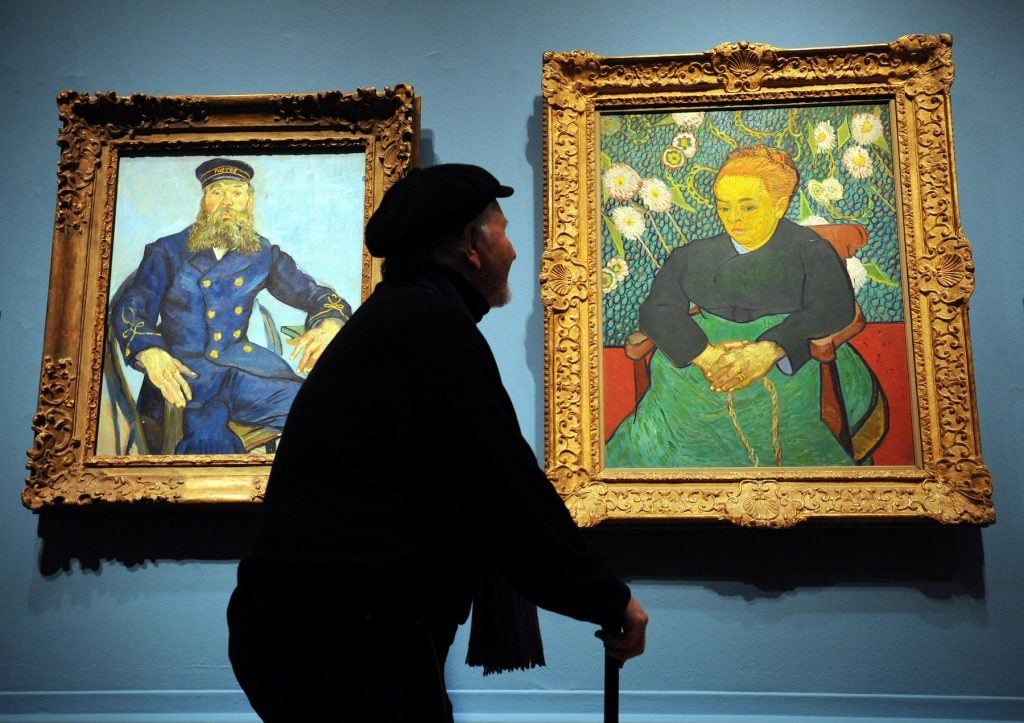
Art enthusiast John Trew looks at Van Gogh works—The Postman Joseph Roulin and Lullaby; Madame Augustine Rocking a Cradle—during the preview of “The Real Van Gogh: The Artist and His Letters.” (Photo by Fiona Hanson/PA Images via Getty Images)
Still, I will not lie to you: I don’t think the A.I.-written Sewell review is terrible. The London Standard‘s simulated broadside is not funny or nasty or unique enough that someone would read the paper just for more of this. But then most human writing is pretty mid, too, as the A.I. boosters never tire of saying (with such conviction that you might almost believe that they just do not like reading at all). A.I. Brian Sewell fills most of a page and is superficially engaging.
But to my mind, this means that it clears one low bar only to trip over another, obvious low bar.
The new London Standard’s ostensible purpose in running the A.I. art review is “to provoke discussion about A.I. and journalism” (“provoking discussion” being, almost always, a refuge for scoundrels). Yet the publishers haven’t even done the bare minimum to tell us what we are supposed to discuss. The A.I. article is prefaced with just two lines of explanation: “Our late art critic was renowned for his excoriating reviews. In a one-off experiment, we asked A.I. what he would say about the National Gallery’s latest exhibition.”
That’s all we get. But the idea of “A.I. writing,” like “A.I. art,” doesn’t mean much without further clarification.
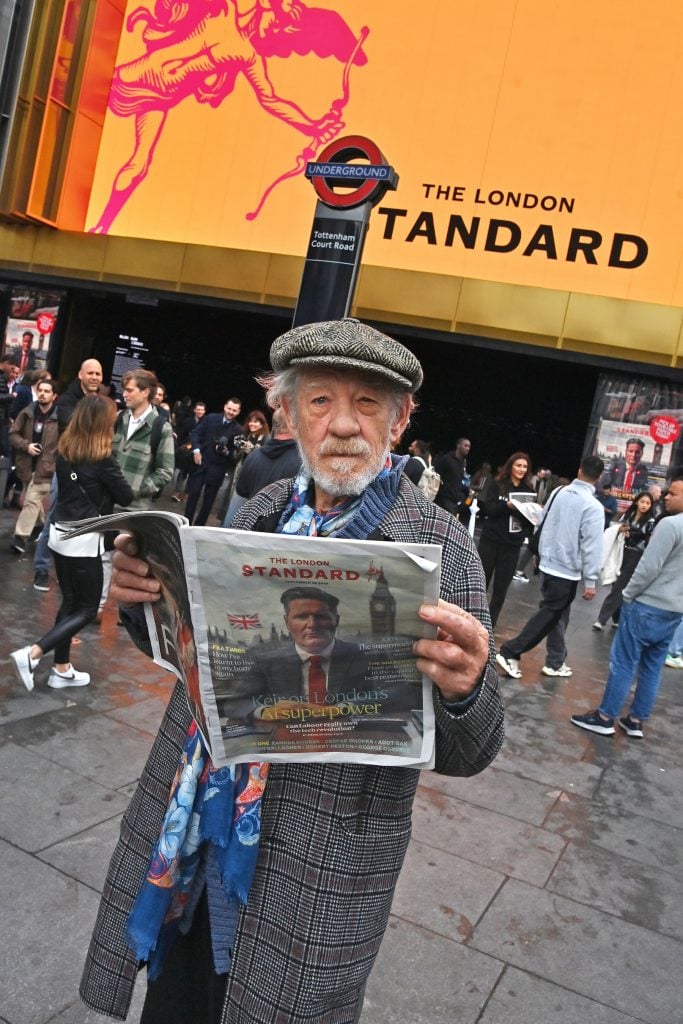
Inexplicably, an image of Sir Ian McKellen with The London Standard, for some reason. (Photo by Dave Benett/Getty Images)
You see, knowing what kind of text you are reading really helps you read something. There are all kinds of background suppositions that we bring to a piece of writing to help classify its genre and therefore know how to read it (Is it fiction? Non-fiction? Opinion? Satire?) You don’t usually think about that classification process much—if everything’s going well, you shouldn’t have to—because all kinds of ambient cues and acquired habits do the work for you. But in the case of the A.I. review, these questions haven’t really been thought through, so that, intellectually, reading this text is like trying to read something on your laptop while having to minimize an error message that keeps popping up.
Specifically, it’s hard to know how real it is, on at least two levels—the level of experience and the level of opinion.
On the first level, your mind wants to know: What types of things related to the “Van Gogh: Poets and Lovers” show have actually been “experienced” by the “A.I.”? And what is the nature of that experience? Does the “A.I.” have some kind of access to the physical show? The catalogue? Is it just summarizing things based on what other people have written? By “A.I.” do we mean anything more than garden-variety prompt-to-text generator?
On the second level, your brain wants to know: Does this piece of writing express anyone’s actual opinion? Or is its hostility just random contrarian schtick? (In which case you can tune it out like any other piece of clickbait.) Who made the prompts that produced this text and what were the prompts? Who decided that this review was the review to publish, of all the different, arbitrary reviews that could be generated in Sewell’s style?
In short, what do the words “we asked A.I. what he would say” actually mean?
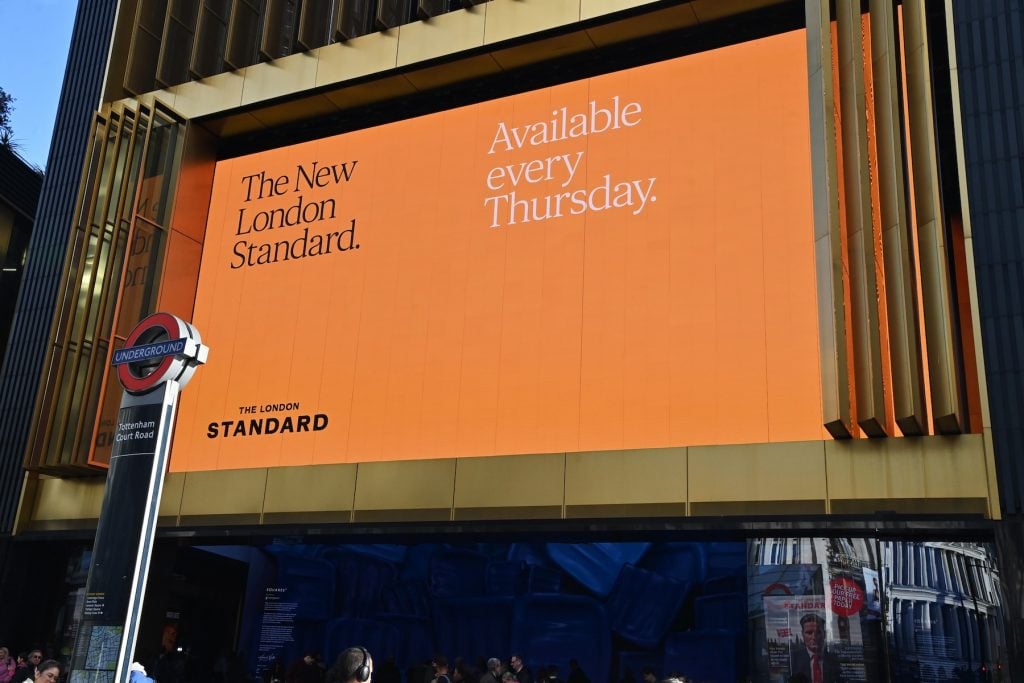
The London Standard celebrates it’s debut issue at Outernet London on September 26, 2024 in London, England. (Photo by Dave Benett/Getty Images)
The fact that none of these questions are addressed makes the reader suspect that the “experiment” was just some suit telling some peon, “Have ChatGPT do one of those ‘excoriating’ Brian Sewell reviews of the big Van Gogh show.” And then that peon having to hit refresh until they got something that was good enough.
As Ella Dorn points out in the New Statesman, anyone could just do that themselves. And since the Tube does have wifi, the “discussion” the exercise really provokes is, “Why am I reading this paper, again?”
But I’ve already given A.I. Brian Sewell much more time than it deserves. The London Standard‘s cheapo provocation irritates me mainly not because what the A.I. does is so impressive or terrifying, but because of what it suggests about the low level of discussion about art and tech and journalism, and how little the people in charge actually care to invest in raising it.
Truth be told, Brian Sewell was not a writer that I much looked to or held in reverence (though Andrew Russeth, a great human art critic, tells me that his 2005 TV miniseries, Brian Sewell’s Grand Tour, is very funny). Still, maybe the best thing we might do with this sudden focus on him is to listen to the actual Sewell in the clip below, as he talks about the time it takes to cultivate a connection with art, and the value in asking yourself what kind of consciousness created it.
I think there’s something in it: